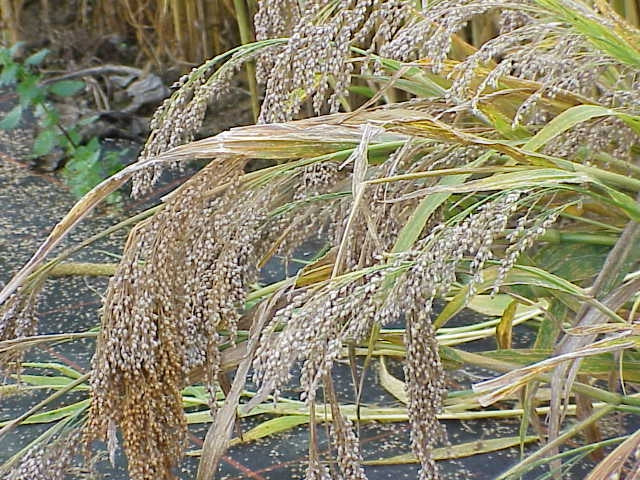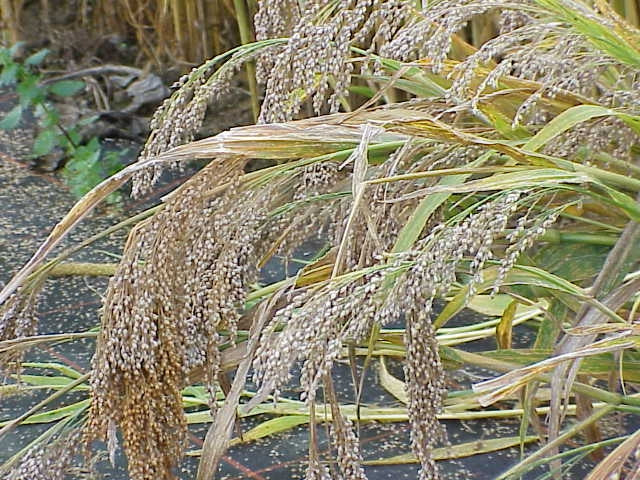MILE - ORGANIC DRESS
Have a question?

MILE - ORGANIC DRESS
Dettagli
Millet and Panic have very similar morpho-biological characteristics. They are two annual herbaceous plants that reach a height of 1-1.5 meters (greater in millet). The origins of these two plants are not certain, as ancient peoples often confused them. De Candolle attributes the Indian Archipelago to them as their homeland; here in Europe it can be assumed that these two plants were cultivated in central and eastern Europe already in prehistoric times. In Italy the importance of these crops has been increasingly decreasing, as their production is intended exclusively for feeding birds. Millet and panicle can also be used as fast-growing summer herbs, to be used from milky to waxy maturation.
Botanical characters
Millet has large lanceolate leaves, hairy on the edge and sheath; the inflorescence is a large, long panicle, hanging on one side, made up of glabrous, racemose spikelets; each spikelet bears a hermaphroditic flower above and a male or neutral one inside; glume with two ribs, the lower one smaller. The flower has three stamens, a glabrous ovary with two feathery stigmas; the caryopsis is shiny, smooth, elliptical, compressed, of a different color depending on the variety.
Panic has narrower, shorter and rougher leaves. The cob is composed, irregularly cylindrical, 20-40 cm long, at maturity it tilts towards the ground. The spikelets are equipped with long bristles and, as with millet, contain a hermaphroditic upper flower and another male lower one; unequal glumes, ovary and stamens as in millet, two terminal elongated styles. Compared to millet, the kernels are less shiny, round in shape, flattened and smaller in size. Also for this plant the color of the seed characterizes the individual varieties.
Environmental needs
Millet and panicle have a relatively short cultivation cycle (about 3-4 months) and are characterized by a prolonged and notable tillering capacity. They resist drought and high temperatures, but are sensitive to cold and water stagnation. Millet and panicle are tropical plants and therefore fear the cold and excessive humidity, while they resist drought very well. Due to their particular biological characteristics, these two species are generally used as intercrops in light and sandy soils, with little humidity during the entire summer period.
Variety
Panicum miliaceum album or white millet is the most common variety in Italy and Europe. There are other varieties such as Panicum miliaceum luteum, P. miliaceum nigrum, P. miliaceum bicolor, but they are for very hot-arid climates.
For Panic, the most common in Italy is Panicum italicum flavescens with yellowish seeds. In Germany and Hungary, Panicum italicum purpureum is more cultivated.
Cultivation technique
Given the small size of the seed, the soil must be carefully prepared, planting the quantity of fertilizer foreseen for the crop (80-100 kg per hectare of N and 100-120 kg/ha of P and K).
Sowing (at the end of spring or beginning of summer) is carried out in rows 20-40 cm apart, using 5-6 kg of seed per hectare for millet and 6-8 kg/ha for panicle.
Collection and use
The gradual maturation of the various panicles present in the crop generally creates considerable difficulties in choosing the harvesting time and, normally, does not allow the entire production that the plants provide to be obtained. The grain yield is 10-20 quintals per hectare for millet and 8-12 quintals per hectare for panicle.
In Italy the production is intended exclusively for feeding birds. In some areas of Asia and Africa, however, millet and cornflower are still used for human consumption today.
In Macedonia and Romania they are used for the preparation of fermented drinks.
Sometimes panicle rather than millet is cultivated as fodder. The yield can be 100-250 quintals per hectare and the product can be consumed in its green state or stored in silos.
Adversity and parasites
Millet and panicle are subject to decay and coal, and it is therefore prudent to use the same precautions as for wheat.


